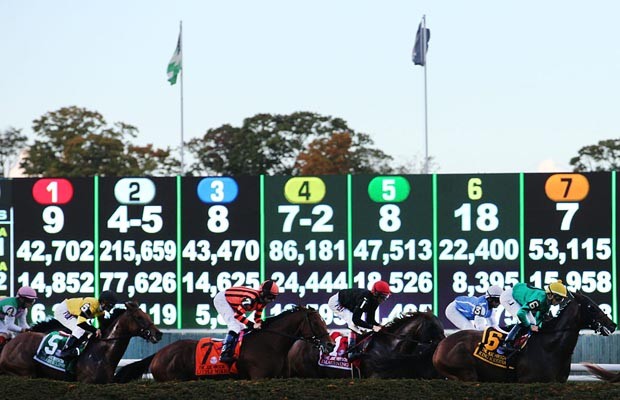Well.. we mean by the post position numbers. The draw for the Kentucky Derby post positions was Tuesday morning. It’s a blind draw to see in what order the owners/trainers get to place their horses in the gate for the Derby.
Trainers have to have some luck in getting an early draw, and then take into account their horse’s style of running in order to place them in a “perfect” position to win in a 20 horse field.
In a 20 horse field, to far inside and you are liable to get jostled as everyone tries to position going into the first turn. To far outside and you have to run farther. Assuming the width needed for a racehorse and rider is 4 feet, for every path off the rail, a horse runs more than 25 feet farther. If you are 5 wide going into turn 1, then your horse will run about 125 feet more than the others. Plus there is the energy expended to just try and get to that position in the first turn.
So, taking into account the above, Post positions 5-12 are ideal. If there is an ideal in a 20 horse field. Posts 14 and 15, where the gates break afford more room, and are considered acceptable for that reason.
So let’s break it down by the numbers:
- The average field size in the history of the Derby is 13.2 horses, but the average field size since the turn of the century is 19.1, with no field smaller than 16.
- Nine of the 19 winners since 2000 broke from gate 13 or higher.
- Seven of those 19 winners since 2000 broke from post 15 or higher, known as the auxillary gate.
- No horse has won the Kentucky Derby from gate 1 since Ferdinand in 1986.
- The only horse who has won from post 1, 2, or 3 since then is Real Quiet, the 1998 Derby winner who came up just a nose shy of winning the Triple Crown.
- Most successful position? 11.2 percent win rate for gate 5,
- PP 17 has never had a winner
- Horses that break from Gate 10 have a 29% in the money record.
- No horse has won from the #14 since 1961





